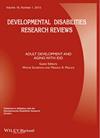John D. Lantos
{"title":"罕见儿童疾病的危险和昂贵的筛查和治疗:克拉伯病的案例","authors":"John D. Lantos","doi":"10.1002/ddrr.133","DOIUrl":null,"url":null,"abstract":"<p>Public policy surrounding newborn screening is in flux. New technology allows more screening for more diseases at lower cost. Traditional criteria for target diseases have been criticized by leading health policymakers. The example of newborn screening for Krabbe disease highlights many of the dilemmas associated with population-based screening programs. Krabbe is difficult to diagnose, variable in its natural history, and does not always respond to treatment. The only available treatment is hematopoietic stem cell transplantation, which is expensive, risky, and of uncertain efficacy. This article analyzes the debate about Krabbe as an example of the sorts of debates that will likely arise for many more diseases over the next decade. I conclude that pilot programs in pioneer states should be carefully evaluated before testing for Krabbe is universalized. © 2012 Wiley Periodicals, Inc. Dev Disabil Res Rev 2011; 17:15–18.</p>","PeriodicalId":55176,"journal":{"name":"Developmental Disabilities Research Reviews","volume":"17 1","pages":"15-18"},"PeriodicalIF":0.0000,"publicationDate":"2012-03-23","publicationTypes":"Journal Article","fieldsOfStudy":null,"isOpenAccess":false,"openAccessPdf":"https://sci-hub-pdf.com/10.1002/ddrr.133","citationCount":"22","resultStr":"{\"title\":\"Dangerous and expensive screening and treatment for rare childhood diseases: The case of krabbe disease\",\"authors\":\"John D. Lantos\",\"doi\":\"10.1002/ddrr.133\",\"DOIUrl\":null,\"url\":null,\"abstract\":\"<p>Public policy surrounding newborn screening is in flux. New technology allows more screening for more diseases at lower cost. Traditional criteria for target diseases have been criticized by leading health policymakers. The example of newborn screening for Krabbe disease highlights many of the dilemmas associated with population-based screening programs. Krabbe is difficult to diagnose, variable in its natural history, and does not always respond to treatment. The only available treatment is hematopoietic stem cell transplantation, which is expensive, risky, and of uncertain efficacy. This article analyzes the debate about Krabbe as an example of the sorts of debates that will likely arise for many more diseases over the next decade. I conclude that pilot programs in pioneer states should be carefully evaluated before testing for Krabbe is universalized. © 2012 Wiley Periodicals, Inc. Dev Disabil Res Rev 2011; 17:15–18.</p>\",\"PeriodicalId\":55176,\"journal\":{\"name\":\"Developmental Disabilities Research Reviews\",\"volume\":\"17 1\",\"pages\":\"15-18\"},\"PeriodicalIF\":0.0000,\"publicationDate\":\"2012-03-23\",\"publicationTypes\":\"Journal Article\",\"fieldsOfStudy\":null,\"isOpenAccess\":false,\"openAccessPdf\":\"https://sci-hub-pdf.com/10.1002/ddrr.133\",\"citationCount\":\"22\",\"resultStr\":null,\"platform\":\"Semanticscholar\",\"paperid\":null,\"PeriodicalName\":\"Developmental Disabilities Research Reviews\",\"FirstCategoryId\":\"1085\",\"ListUrlMain\":\"https://onlinelibrary.wiley.com/doi/10.1002/ddrr.133\",\"RegionNum\":0,\"RegionCategory\":null,\"ArticlePicture\":[],\"TitleCN\":null,\"AbstractTextCN\":null,\"PMCID\":null,\"EPubDate\":\"\",\"PubModel\":\"\",\"JCR\":\"\",\"JCRName\":\"\",\"Score\":null,\"Total\":0}","platform":"Semanticscholar","paperid":null,"PeriodicalName":"Developmental Disabilities Research Reviews","FirstCategoryId":"1085","ListUrlMain":"https://onlinelibrary.wiley.com/doi/10.1002/ddrr.133","RegionNum":0,"RegionCategory":null,"ArticlePicture":[],"TitleCN":null,"AbstractTextCN":null,"PMCID":null,"EPubDate":"","PubModel":"","JCR":"","JCRName":"","Score":null,"Total":0}
引用次数: 22

 求助内容:
求助内容: 应助结果提醒方式:
应助结果提醒方式:


